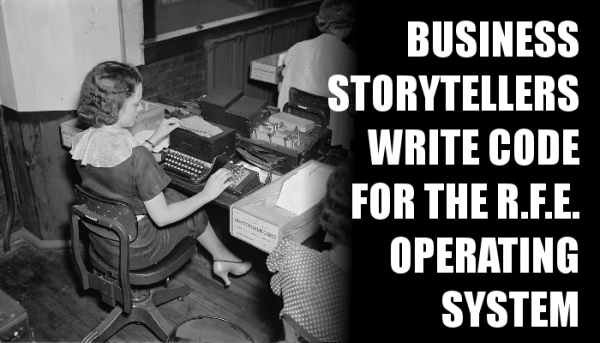
Parents have intimate knowledge about the relationship between story structure and the ability for children to learn new things. We’ve marveled at how newborns enter the world with no knowledge, yet somehow bootstrap that nothingness into the ability to walk, talk, go to school, find occupations and eventually live on their own.
I think of an infant’s brain as like a computer running an operating system with no apps. I call this operating system RFE (pronounced ARR-fee) because the human brain believes that there’s a Reason For Everything. RFE is the driving force behind human thought as we observe patterns, associate those patterns with “normal,” and try to understand the reason for any discrepancies.
I’ve written quite a bit about Kendall Haven’s assertion that the only way humans learn is through story structure. I’ve also described Kenn Adams’ Story Spine as the ultimate structure for a story. So, is there a way to demonstrate how humans use RFE and story structure to extrapolate knowledge out of nothingness? Let’s give it a try:
Once upon a time there was a baby girl.
Everyday, someone comforted her when she cried.
Then one day, she cried and nobody came.
And because of that, she cried louder.
And because of that, she cried even louder.
Until finally, she noticed something. When it’s light outside, people comfort her. When it’s dark outside, they don’t.
And ever since then, she learned to sleep through the night.
Storytellers are RFE programmers. We understand that the information we choose to present will only be accepted by an audience after it passes RFE-ish tests:
- Why is the storyteller telling me this particular fact?
- Does the information fit with my understanding of “normal?”
- If not, why?
Great storytellers respect the brain’s incredible power to fill-in the blanks. Instead of spoon-feeding their audiences, they deliver just enough information for the RFE to piece together the meaning. Sometimes a business storyteller will choose to deliver a fact in an unorthodox way for the sole purpose of initiating hyper-RFE activity, then follow-up those odd tidbits with concepts that allow the listener to bridge-the-gap between the conflicting ideas. The worst storytellers, however, lose their audiences by presenting non-sequitur information that sends the RFE spiraling into an infinite loop as they try to “wrap their heads around” the concept.
Want to become a better business storyteller? Learn how to write code for the RFE operating system.
Photo Credit: Library of Congress